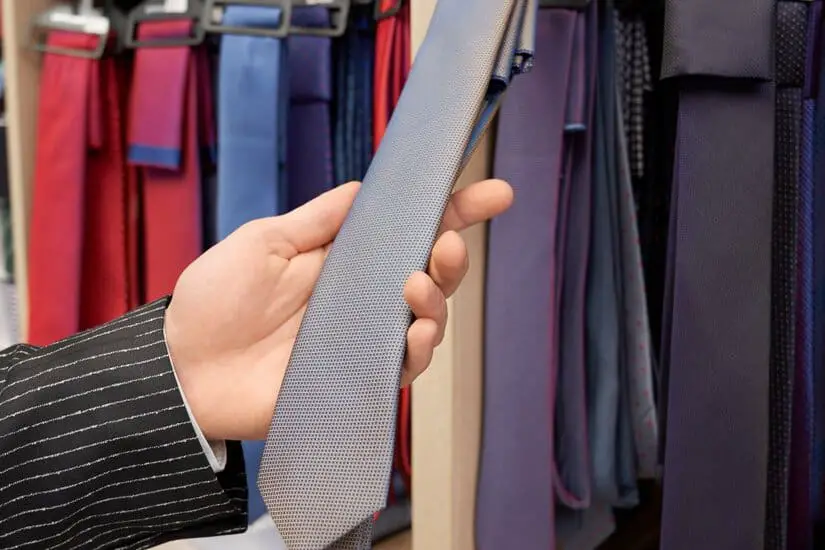Maintaining a smooth, wrinkle-free appearance for my ties is crucial for presenting a professional or formal image. A wrinkled tie can undermine an otherwise impeccable ensemble, so I take measures to keep my ties in pristine condition. The key to preventing wrinkles is proper handling, storage, and care. By adhering to a few straightforward strategies, I ensure that my ties remain free from unsightly creases and ready for any occasion.
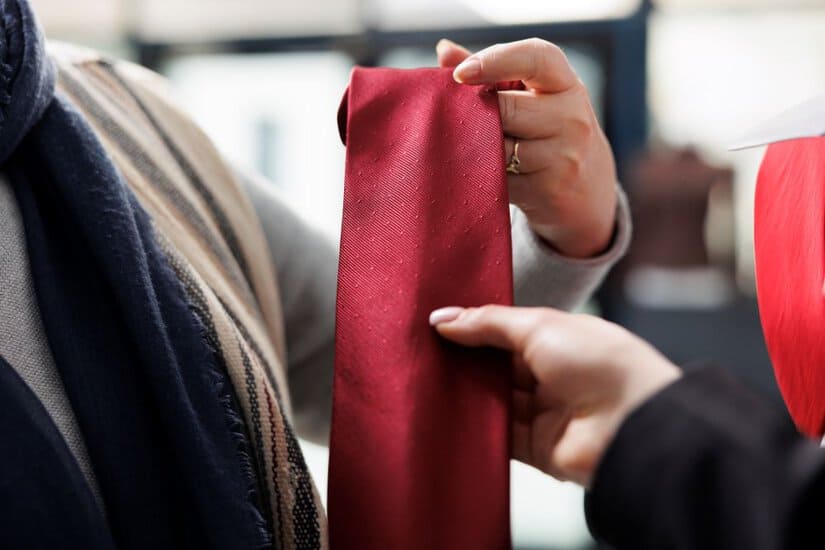
Storing ties correctly goes a long way in keeping them wrinkle-free. I hang my ties or roll them loosely to avoid creating creases that are difficult to remove. When hanging, I use a dedicated tie rack or a hanger, making sure there’s enough space between each tie to prevent compression wrinkles.
For long-term storage, I prefer rolling ties gently and placing them in a drawer or a storage box, which guards against dust and maintains their shape without stress on the fabric.
When I travel, I take care to pack my ties in a way that protects them from wrinkling. I lightly roll them and place them in a separate compartment or a tie case. This attentiveness in handling ensures my ties stay presentable, no matter where I go. Through consistent, proper care, I enjoy the confidence that comes from wearing a clean and well-kept tie.
Understanding Ties and Fabrics
To ensure my ties remain free from wrinkles, I’ve found that understanding the different types of tie materials and assessing tie quality are crucial. These factors play a significant role in the tie’s appearance and longevity.
Check out these other most sought posts about tie care and maintainace:
- How Many Ties Should a Man Own?
- Tieless Elegance: What Collar Looks Best Without a Tie?
- What Colors of Ties Are Considered Professional?
Different Tie Materials
Silk: My experience with silk ties has shown me they are remarkably smooth and have a high resistance to wrinkling due to silk’s natural elasticity. Silk ties are a staple in my wardrobe because they not only resist creases well but also have a luxurious sheen that maintains its quality over time.
Cotton: Cotton ties have a more casual look and are easier to maintain. They can hold creases but are also easier to iron. The breathable nature of cotton makes these ties suitable for daily wear, especially in warmer climates.
Wool: Wool ties lend a textured and heavier feel to my attire. Generally, wool is durable and resists wrinkles, but it can become misshapen if not stored properly. Woolen ties work best in cooler months and add a touch of sophistication to my outfits.
Linen: Ties made from linen are incredibly light and have a distinctive texture that can add a unique element to my look. However, linen is prone to wrinkling, so these ties require careful handling and storage to keep them looking their best.
Polyester: When I’m looking for a cost-effective option, I opt for polyester ties. They are highly resistant to wrinkles and retain their shape well. However, polyester doesn’t have the same quality feel as a silk or wool tie but is useful for daily wear where durability is a priority.
Assessing Tie Quality

When I assess tie quality, I look for a few key factors: the fabric’s feel, the tie’s construction, and its lining. A high-quality tie will feel smooth and substantial, with a lining that provides enough weight to ensure it drapes well but doesn’t cause excessive wrinkling.
I inspect the stitching and the cut; a well-made tie will lie flat and resist turning at the edges. I’ve found that ties that have been cut on the bias (diagonally across the fabric’s weave) tend to be more resilient and hold their shape better, contributing to their ability to stay wrinkle-free.
Preventative Care for Keeping Ties From Wrinkling
To maintain my tie collection in prime condition, I pay close attention to proper handling and employ effective cleaning techniques. These practices help to prevent wrinkles and stains, ensuring each tie is ready to wear when needed.
Proper Handling and Usage
When I wear a tie, I make sure to handle it gently to avoid creases. After use, I carefully unfasten the knot rather than pulling the small end through, which can distort the tie’s shape and lead to wrinkles. To store my ties, I either hang them on a tie rack or roll them loosely starting from the narrow end and store them in a drawer. This technique, inspired by The Modest Man, keeps the fabric free from creases.
Cleaning Tips
Whenever my ties need cleaning, I opt for gentle hand-washing using a mild detergent, particularly for silk ties, as this reduces potential damage from harsh cleaners. If there’s a stain, I address it immediately with a stain remover suitable for the tie’s fabric.
To dry the tie, I lay it flat on a towel to air-dry. I avoid wringing or twisting, which can lead to wrinkles. For routine care, I use a steamer to remove any minor wrinkles. However, I’m careful not to overdo it as frequent steaming can wear out the fabric over time as suggested by nori.
Effective Storing Techniques
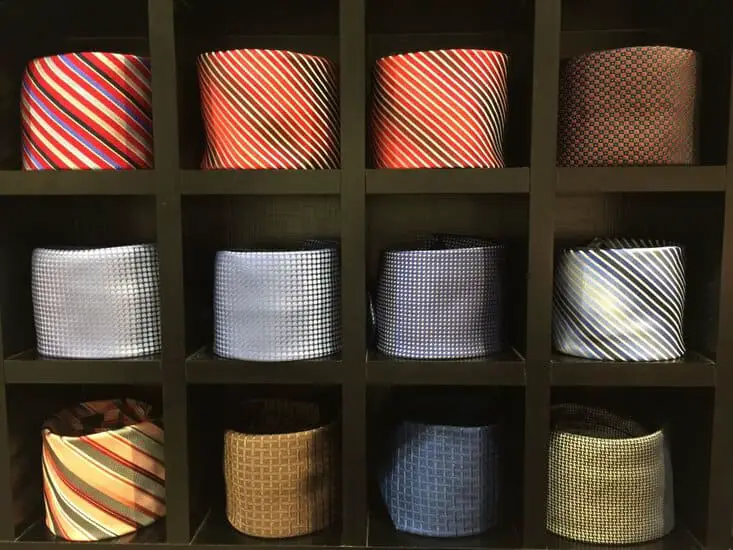
To maintain the pristine condition of my ties, I’ve found that the key lies in the storage solutions I employ. The right approach not only keeps wrinkles at bay but also ensures my ties are easily accessible and well-organized.
Choosing the Right Tie Rack
My criteria for a suitable tie rack are simple: it must be spacious enough to avoid overcrowding and designed to prevent slippage, which can lead to wrinkles. I’ve learned that wooden tie racks are excellent because they offer a sturdy grip without sharp edges that could damage my ties. If my collection includes ties of different fabrics, I opt for racks with varied spacing to accommodate each type’s thickness.
Innovative Solutions for Tie Storage
For long-term storage or those with limited space, I recommend exploring innovative solutions beyond traditional tie racks. Rolled storage in cubbies or dedicated tie organizers keeps my ties in a round shape, mimicking how they’re worn and thereby minimizing creases. For a touch of sophistication and convenience, motorized versions offer a selection at the push of a button, allowing me to hang up and store my ties without fuss.
Ironing and Steaming Ties
When it comes to removing wrinkles from ties, I choose between ironing and steaming based on the material and the severity of the wrinkles. Both methods are effective but require specific techniques to avoid damage.
Ironing Tips for Different Materials
When I iron ties, I always set my iron to the lowest heat setting suitable for the fabric. For silk ties, I use just a touch of warmth and I never apply direct pressure to prevent adding shine marks. With synthetic materials, it’s crucial to avoid high heat to prevent melting the fibers. Here’s a brief guide:
- Silk and wool ties: Iron through a thin cloth using low heat.
- Polyester and other synthetic ties: Better suited for steam; if ironing, use very low heat and iron the backside.
I avoid using starch on ties because it can leave residue and make the fabric stiff, losing its natural drape.
Steaming as an Alternative
Steaming is my preferred method, especially for delicate fabrics that could be damaged by an iron. I hang the tie and let the steam gently work out the wrinkles without making contact. Even a hairdryer can help remove wrinkles from a tie when used on a low heat setting and kept at a distance.
For more severe wrinkles, a steam bath in the bathroom can efficiently diminish them, utilizing the steam from a hot shower. With a handheld steamer, I keep it about four inches below the tie, aiming the steam upward.
Wardrobe Maintenance and Tie Rotation
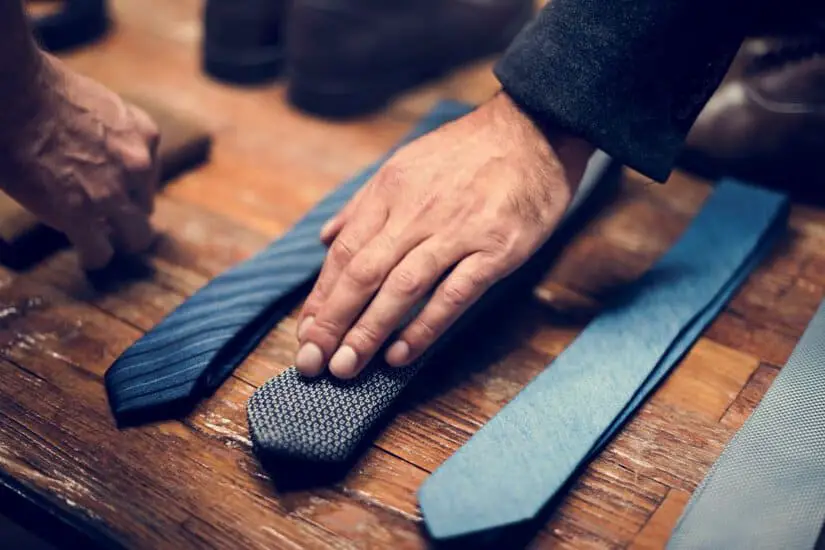
Maintaining my tie collection in pristine condition and rotating my wardrobe smartly are essential to prolonging the life of my ties and keeping my fashion game on point.
Strategies for a Versatile Tie Collection
I always aim for versatility in my tie collection, which allows me to adapt to various fashion needs. To keep my ties wrinkle-free, I store them neatly with the following methods:
- Rolling: I lightly roll my ties and place them in a designated tie drawer to prevent creases.
- Hanging: If I choose to hang my ties, I use a tie rack that provides ample space between each tie to avoid wrinkling.
- Drawer Dividers: For drawer storage, I utilize tie organizers with dividers; this keeps each tie in its own slot, preventing compression and tangling.
I ensure to rotate my ties regularly, wearing them in turns to avoid overuse of a single tie which can lead to earlier wear and tear.
Pairing Ties with Outfits
When it comes to pairing my ties with outfits, I consider the whole ensemble, including suits, shoes, and belts, to create a cohesive look. Here’s how I do it:
- Color Matching: I match my tie color with elements of my suit or with my belt and shoes to tie the look together.
- Pattern Coordination: If my suit has a pattern, I choose a tie with a complementary pattern or a solid color to avoid a clashing appearance.
By thoughtfully selecting which tie to wear with each outfit, I not only keep my tie collection in rotation but also show off my fashion sense confidently.
Removing Wrinkles from Ties
Removing wrinkles from ties can be both simple and cost-effective if you know the right techniques. Whether you opt for home remedies or professional care, it’s important to carefully follow the methods suited to the tie’s fabric.
Home Remedies for Wrinkle Removal
Steam from the Shower: I’ve found that hanging my tie in the bathroom while taking a hot shower effectively reduces wrinkles. The steam helps relax the fibers without direct contact with water, preserving the quality of the tie. It’s crucial to hang the tie away from water splashes and keep it there until the steam has done its job.
Rolling the Tie: A technique I use for ties that aren’t deeply wrinkled involves rolling them up from the narrow end and leaving them for about 12 hours. This method allows the tie to regain its shape and smooth out minor creases without using heat or moisture.
Hairdryer on Low Heat: When I’m in a hurry, I gently use a hairdryer on the lowest heat setting, keeping the device about 6-8 inches from the tie. I go over the wrinkled areas with care to avoid heat damage.
When to Seek Professional Care
Silk and Fine Fabric Ties: If my tie is made of silk or a delicate fabric, and home remedies don’t seem to be effective, I take it to a dry cleaner who specializes in such garments. They have the expertise and suitable equipment to remove wrinkles without damaging the fabric.
Persistent Wrinkles: For stubborn wrinkles that don’t respond to any home treatments, professional steam pressing at a dry cleaner’s may be the best option. They can apply the appropriate level of heat and steam to safely remove the creases.
Travel Tips for Tie Care
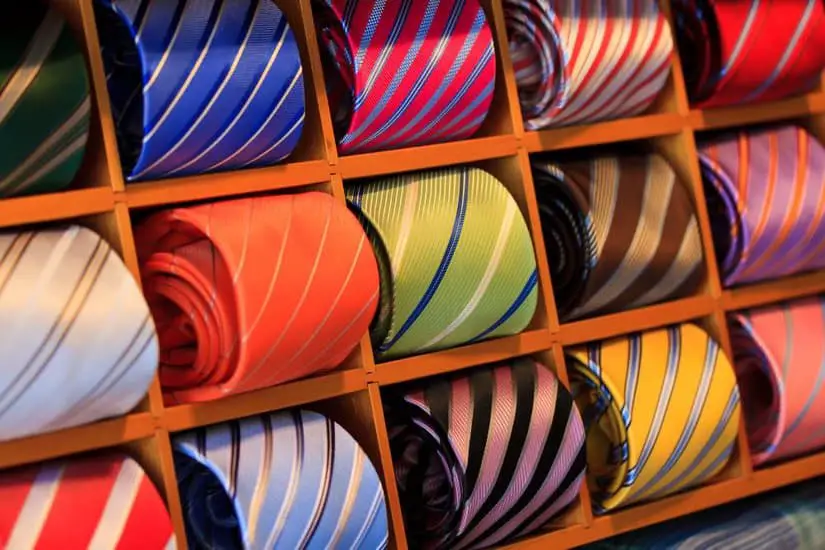
When I travel, ensuring that my ties remain free from wrinkles is key to maintain a professional appearance. I’ve learned that the right packing technique and on-the-go care are essential.
Packing Ties for Travel
Rolling Ties: To minimize space and avoid wrinkles, I roll my ties. I start by folding them in half lengthwise and then rolling them from the narrow end to the thicker end. Doing this carefully prevents creases.
Storing in a Tie Case: If I’m keen on keeping my ties in pristine condition, I use a tie case. It’s a solid investment as it shields the ties from getting crushed by other items in my luggage.
Caring for Ties on the Go
Immediate Unpacking: As soon as I reach my destination, I unpack my ties. This helps them retain their shape and prevents the setting of any incidental creases.
Using a Tie Bar: When I’m on the move, I use a tie bar. It not only adds to my style but also keeps my tie in place and wrinkle-free.
Common Problems and Solutions
When it comes to ties, two recurring issues are the appearance of permanent creases and complications from knots and stains. I’ll address these problems directly and provide effective solutions to ensure my ties remain impeccable.
Addressing Permanent Creases
Permanent creases can damage the fabric and ruin the aesthetic of my ties. To prevent this, I carefully roll my ties instead of folding them for storage. When a crease does form, I use a steamer gently and avoid ironing to prevent damage. If I’m in a pinch, hanging the tie in a bathroom during a hot shower can also help the creases fall out due to the humidity.
Handling Knots and Stains
I make sure to untie the tie knot properly after use – pulling the fabric through the knot gently to keep it from wrinkling. If I notice any stains, I address them immediately, using a mild stain remover suitable for the tie’s material or consulting a professional cleaner for more delicate fabrics like knit ties. Regular maintenance and gentle handling preserve both the look and the longevity of my ties.
Frequently Asked Questions

Maintaining a crisp and wrinkle-free tie is a simple process when you have the right techniques at hand. Let’s address some common queries with clear, straightforward advice.
What is the best method for removing wrinkles from a silk tie?
The most gentle and effective way to remove wrinkles from a silk tie is by using steam. You can hang the tie in the bathroom while taking a hot shower to let the humidity smooth out the wrinkles.
Is it safe to use a steamer on a tie?
Yes, it is safe to use a steamer on a tie; in fact, it’s often preferred. A steamer can carefully release wrinkles without applying direct heat, making it an excellent choice for delicate fabrics like silk.
What are the proper steps to steam a tie without damaging it?
To steam a tie without causing damage, hang it up and hold the steamer a few inches away from the fabric, allowing the steam to penetrate the fibers. Move the steamer along the length of the tie, ensuring not to concentrate on any one area for too long to avoid moisture buildup.
What precautions should be taken when ironing a polyester tie?
When ironing a polyester tie, set the iron to a low heat setting and place a thin cloth between the tie and the iron to act as a barrier. Iron the tie by pressing gently and never leaving the iron stationary on the fabric to avoid melting or burning.
How should ties be stored to prevent wrinkling?
Ties should be rolled up and placed in a drawer or a tie organizer to prevent wrinkling. For travel, a tie case with individual compartments can keep your ties neat and wrinkle-free.
Are professional dry cleaning services effective in removing wrinkles from ties?
Professional dry cleaning services can be very effective in removing wrinkles from ties, especially for fabrics that are difficult to handle at home. However, frequent dry cleaning should be avoided to prevent fabric wear over time.

Samoel Ovanessian is the founder and creator of StylishAlpha.com – a website dedicated to men’s fashion. As a proud owner of more than 200 ties, he loves digging through new clothing combinations for everyday use, formal events and even just for fun. You can read more about Samoel here.

